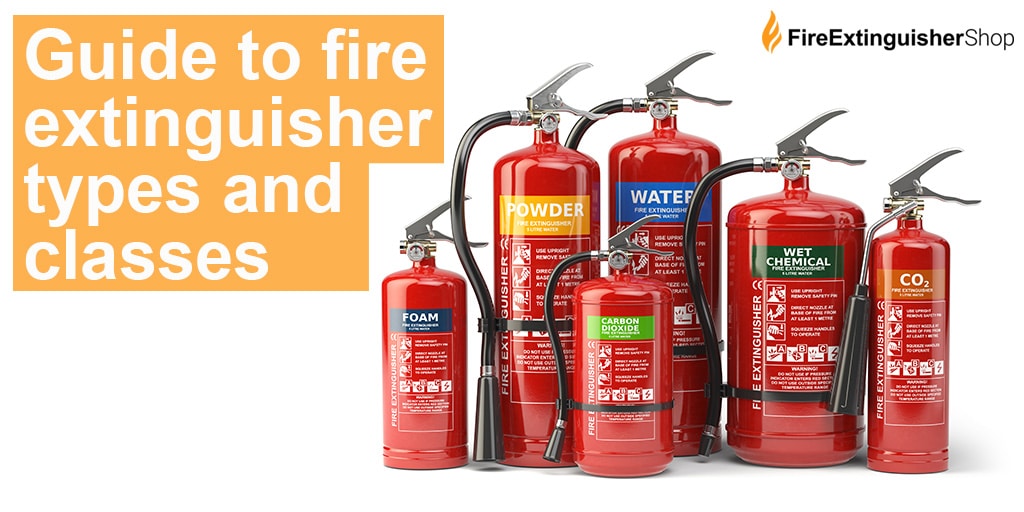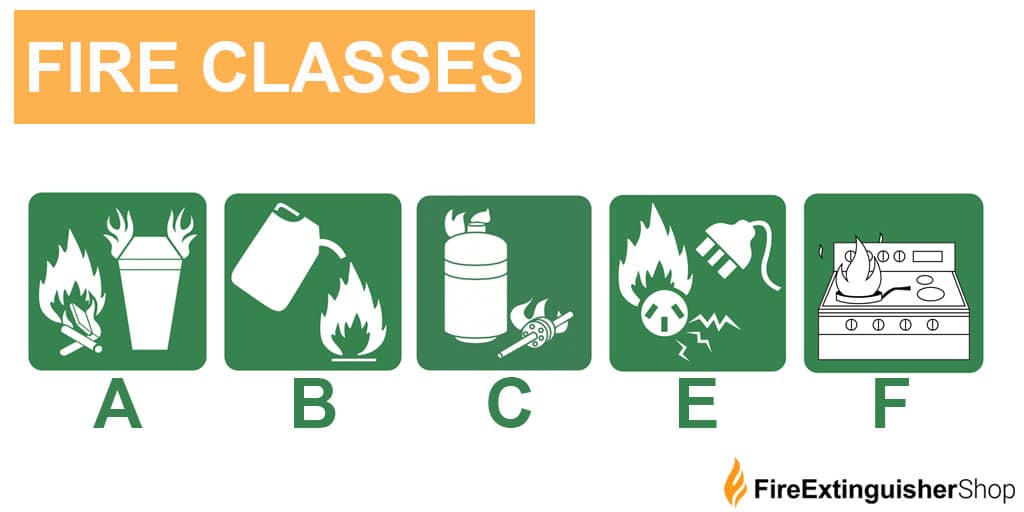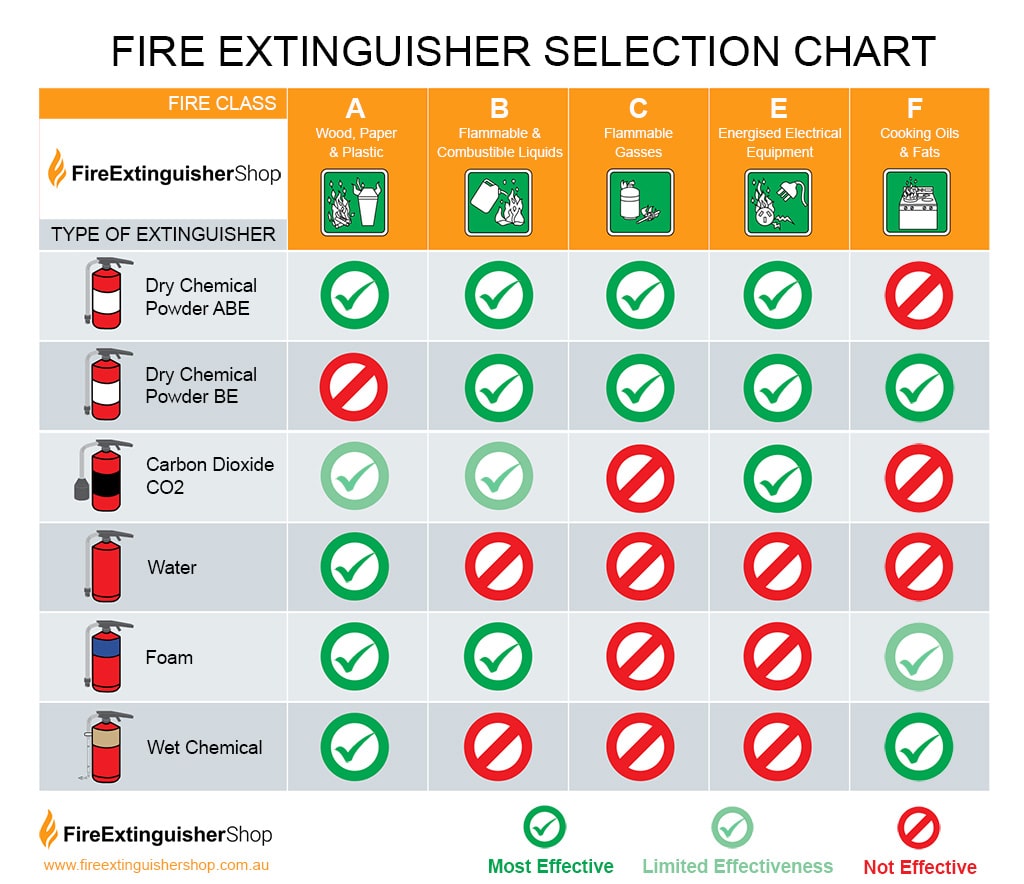Guide To Fire Extinguisher Types And Fire Classes
With fire season already in full swing for much of Australia, the fire services authorities are prompting all homeowners to be fire ready. Business owners to homeowners and facility managers must prepare to minimise fire risks. One of the best ways you can prepare is with a risk assessment of your business premises or facility to evaluate potential fire risks and determine your fire extinguisher needs.
One of the key fire suppression tools available is the fire extinguisher. Of course, you need both the right type of extinguisher on hand and an extinguisher that receives regular maintenance. That starts with understanding the six main fire classes and the six types of available extinguishers to address each type of fire. The right extinguishers ensure that you protect lives and, in the case of businesses and facilities, protect assets and remain within the legal regulations.

Fire Classes
There are six fire classes. Each class is defined by the type of fuel in the fire. This approach lets you make better decisions about the kind of extinguisher you need based on the class of fire most likely in your location.
Class A: Paper, Wood, and Plastic
Class A fires are the most common class of fire because of the widespread use of paper, wood, and plastic. These fires can affect anything from rubbish to structures and even clothing. With the exception of carbon dioxide extinguishers and BE powder extinguishers, any fire extinguisher should work against this class.
Class B: Flammable and Combustible Liquids
Class B fires can involve a range of liquids. Common fuel sources include:
• Petrol
• Kerosene
• Paint
• Wax
• Oil
• Alcohol
• Cleaning supplies
Dry powder extinguishers work best against this fire class, along with foam and carbon dioxide suppressors. Do not use water extinguishers against this class of fire.
Class C: Flammable Gases
Class C fires start from a number of commonly used gases found in businesses and homes. Common sources include:
• Propane
• Butane
• Liquified petroleum gas
• Liquified natural gas
• Acetylene
Dry powder extinguishers are the only acceptable extinguisher type for this class of fire. Make sure you shut down the supply of gas prior to using the extinguisher.

Class D: Combustible Metals
Class D fires remain fairly uncommon and typically occur in industrial settings where high heat and the right kinds of metals appear together. Combustible metals include:
• Titanium
• Magnesium
• Aluminium
• Sodium
• Lithium
• Plutonium
• Calcium
• Potassium
Class D fires require a special, Class D dry powder extinguisher.
Class E: Electrical
Class E fires can occur anywhere you find electricity but are typically caused by malfunctioning appliances or computer equipment. Vaporizing liquid extinguishers are designed to address this class of fire.
Class F: Cooking Oils and Fats
Class F fires occur most often in residential, restaurant, or facility kitchens. Common fuel sources include:
• Vegetable oil
• Olive oil
• Lard
• Butter
• Drippings
Wet chemical extinguishers are the best option for this class of fire. Never use water on Class F fires as it can make the fire worse.
Types of Fire Extinguishers
While fire extinguishers cannot help you against a large fire, they can help you put out small fires. This limits the potential damage to equipment and the structure, as well as helps prevent injury. You must use the appropriate extinguisher, or you risk making the fire more destructive, rather than less destructive.
There are six commonly available types of fire extinguishers available in Australia. You can identify each type by a coloured band on the extinguisher.

How To Identify Fire Extinguisher Types
- Red Coloured Band – Extinguishers with a red band use water as the suppressant. Only use these extinguishers for Class A fires.
- Blue Coloured Band – Extinguishers with a blue band use foam as the suppressant. Only use foam extinguishers for Class A or Class B fires.
- Black Coloured Band – Extinguishers with a black band use carbon dioxide as the suppressant. Only use carbon dioxide extinguishers for Class E and Class B fires.
- White Coloured Band – Extinguishers with a white band use dry powder as the suppressant. Only use dry powder extinguishers on Class E, Class B, and Class A fires.
- Yellow Coloured Band – Extinguishers with a yellow band use vaporizing liquid as the suppressant. Only use vaporizing liquid extinguishers on Class E and Class A fires.
- Oatmeal Coloured Band – Extinguishers with an oatmeal-coloured band use wet chemicals as the suppressant. Only use wet chemical extinguishers on Class A and Class F fires.
Fire Extinguisher Tips
Getting the most value from your extinguisher means you need it at hand in the event of an emergency and functional at the time. Here are a few tips that will help ensure your extinguishers are ready when the time comes.
Storage
You want your extinguishers stored in accessible locations for ease of access during a fire. You should make sure you keep them stored away from areas where fires are likely to start. For example, you might place one on the wall immediately outside of a kitchen.
Maintenance
Extinguishes do need some level of maintenance. You should check the pressure in the extinguishers regularly. You should also shake dry powder extinguishers to prevent the powder from settling too much. A fire professional should perform inspections on your extinguishers at least once a year, and preferably every six months.
Extinguisher Use
As a general rule, no one should use an extinguisher without going through Fire Extinguisher Training. Beyond that, there are some basic rules that you should employ before using an extinguisher.
• Make sure that the extinguisher is meant for the materials in the fire
• If electricity may be involved, the extinguisher has a yellow, black, or white
band to remove the possibility of conducting the electricity
• The fire is small enough to put it out quickly
• Remaining to use the extinguisher does not put you at risk
• No one else remains in the vicinity
Always choose fire extinguishers that either meet or exceed the Australian Standards. Make sure that you fully read and understand the instructions that come with your extinguisher for manufacturer instructions on usage, storage, and maintenance.
If you doubt your ability or the ability of your employees to use a fire extinguisher safely, enrol yourself or your employees in a training course.
We offer a full line of fire extinguishers for your needs. For more information, please contact us today.
